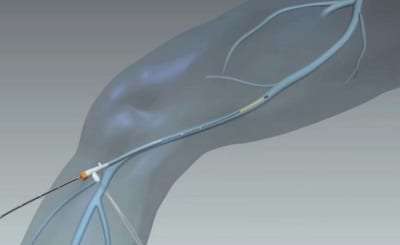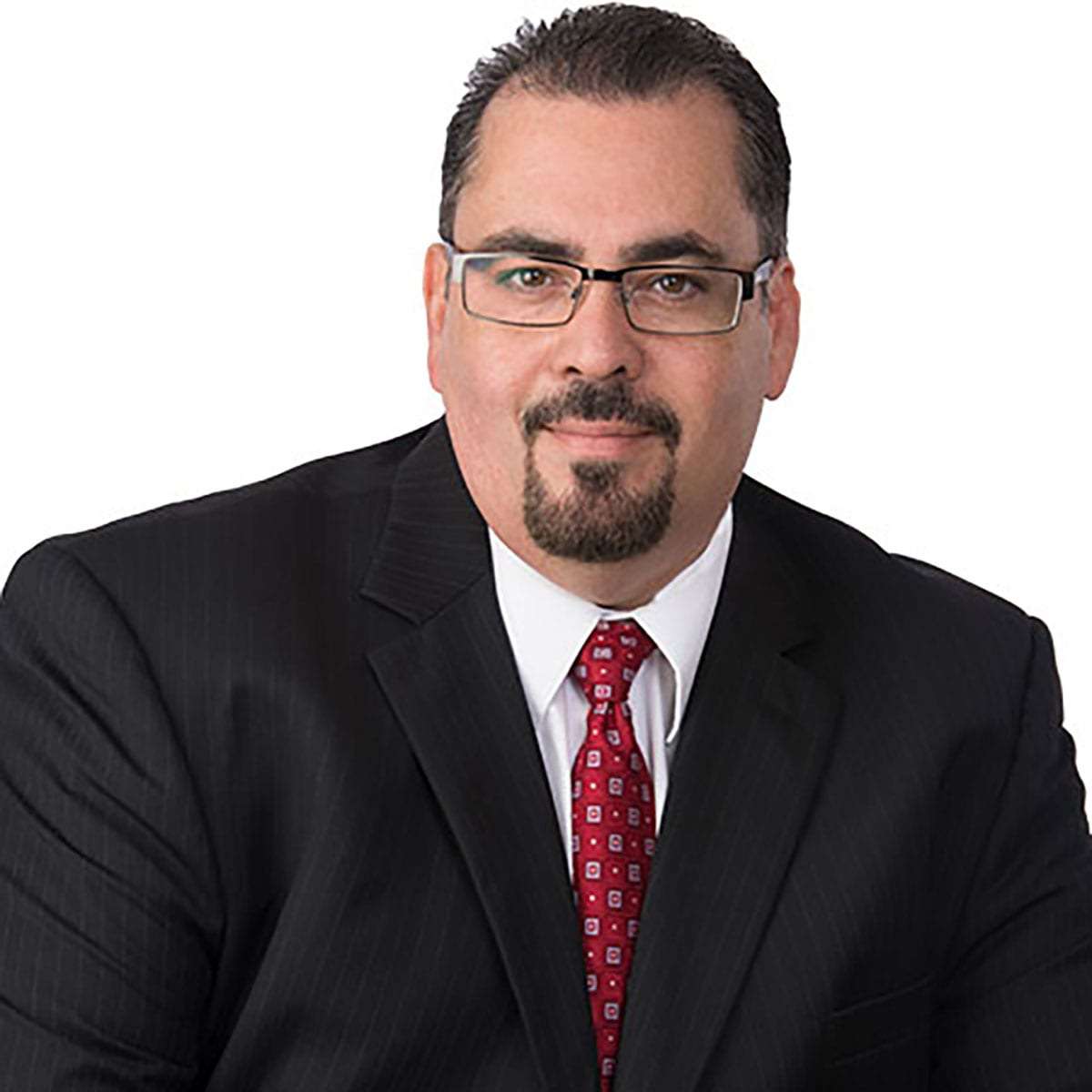 The ClosureFast Endovenous Radiofrequency Ablation procedure is a minimally invasive pain management treatment for venous reflux disease. It is a common procedure performed at the Novus Spine & Pain Center vein clinic in Lakeland, Florida, for patients suffering venous insufficiency (also called venous reflux).
The ClosureFast Endovenous Radiofrequency Ablation procedure is a minimally invasive pain management treatment for venous reflux disease. It is a common procedure performed at the Novus Spine & Pain Center vein clinic in Lakeland, Florida, for patients suffering venous insufficiency (also called venous reflux).
Venous insufficiency occurs when the valves inside veins carrying blood to the heart no longer function properly, causing blood to pool most often in the legs. This pooling causes the veins to expand, lose form, protrude from under the skin, and develop into varicose veins.
The speed and precision of the ClosureFast procedure offer patients a rapid recovery with minimal discomfort and scarring.
In This Article:
- What Is ClosureFast?
- What is Radio Ablation?
- Frequently Asked Questions About the ClosureFast Procedure?
- How is ClosureFast Different from Vein Ligation?
- How is ClosureFast Different from Laser Ablation?
- How Long Does the ClosureFast Procedure Take?
- Does the ClosureFast Procedure Require Anesthesia?
- How Quickly Can I Return to Normal Activities?
- How Soon Will Symptoms Improve After the Procedure?
- Will There Be Any Pain, Bruising, or Tenderness After a ClosureFast Procedure?
- Are There Risks with the ClosureFast Procedure?
- Is the ClosureFast Procedure Suitable for Everyone?
- Is Age an Important Consideration for the ClosureFast Procedure?
- What Happens to the Treated Vein Left Behind in the Leg?
- What Are the Benefits of the ClosureFast Procedure?
- Novus Spine & Pain Center
- ClosureFast Resources
What Is ClosureFast?
The ClosureFast procedure uses radiofrequency energy to precisely and effectively treat patients suffering from varicose veins and other chronic venous insufficiencies. It is a minimally invasive outpatient procedure that leaves minimal scarring at the site of the incision.
During treatment, a special sheath is inserted into the varicose vein using ultrasound guidance. The ClosureFast catheter is then inserted into the vein through the sheath and positioned within the vein.
An anesthetic solution is delivered to the area surrounding the targeted vein segment. The solution provides a protective cushion for the surrounding tissue and improves contact between the vein wall and the catheter during treatment.
The ClosureFast catheter delivers intense heat to destroy a short segment of the varicose vein. When the catheter is energized, the heating element quickly reaches 120 degrees Celsius (248 degrees Fahrenheit) for 20 seconds to precisely and effectively destroy the interior wall of the varicose vein.
The heat from the catheter shrinks and collapses the target vein, creating a fibrotic seal and closing the vessel. The procedure is repeated until the entire varicose vein is closed. The blood previously carried in the vein redirects to healthy veins, and the body absorbs the diseased vein.
The ClosureFast procedure eliminates the need for major surgery and general anesthesia. It is generally performed using local anesthesia and takes approximately 45-60 minutes. The total time from arrival and release for most patients is typically two to three hours at the clinic. The time includes all standard pre- and post-treatment procedures.
In a head-to-head post-procedure study, patients who received the ClosureFast procedure experienced less pain, less bruising, and a faster recovery period than patients receiving laser ablation treatment. The ClosureFast procedure has been used to treat over 900,000 patients in 100 countries and is covered by most health insurance plans in the United States.
What is Radiofrequency Ablation?
In recent years, treatment options for chronic venous insufficiency have advanced far beyond invasive procedures like vein stripping and ligation.
Radiofrequency is a type of electrical energy that has been used in medical procedures for decades. At the most basic level, this electrical energy is used to create heat. The heat is produced in a specific location, at a particular temperature, for a specific period of time. The procedure results in the death of unwanted tissue.
During a radiofrequency procedure, an ablation probe is placed directly into the target tissue. The radiofrequency energy flows through the electrodes, causing the probe to heat. The heat kills the target vein tissue within a few seconds. The heat is concentrated and decreases rapidly at a specific distance from the electrode tip, limiting the area affected by the heat. The procedure creates a distinct boundary between dead tissue and unaffected surrounding tissue.
Radiofrequency energy is delivered at 120 degrees Celsius (248 degrees Fahrenheit), in contrast to the more than 700 degrees Celsius (1,292 degrees Fahrenheit) of some laser technologies. Animal studies have shown that laser treatments for venous insufficiency can potentially lead to vessel perforation and obliteration of the vein walls. The laser ablation procedure tends to boil the blood or water inside a vein, which can lead to both bruising and post-procedure pain.
Frequently Asked Questions about the ClosureFast Procedure
Here are some questions frequently asked about the ClosureFast Procedure.
How is ClosureFast Different from Vein Ligation and Stripping?
With vein stripping, the physician makes an incision in the groin and ties off the vein, after which a tool is threaded into the vein to pull it out through a second incision just above the calf.
In comparison, the ClosureFast procedure is minimally invasive. In contrast to vein stripping, the vein is closed using heat delivered by a catheter inserted through a small incision below the knee. Furthermore, vein stripping is usually performed in an operating room under general anesthesia, while the ClosureFast procedure is performed in an outpatient setting, typically using local or regional anesthesia.
How is ClosureFast Different from Laser Ablation?
The ClosureFast procedure utilizes radiofrequency energy in 20-second bursts to provide controlled heat to collapse and seal the vein. Once a vein is closed, blood flow is redirected to healthy veins.
In comparison, laser ablation uses laser heat to contract and seal the affected vein. The laser delivers heat to the vein causing it to collapse. Unlike the ClosureFast procedure, peak laser temperatures can reach over 1334 degrees Fahrenheit (729 degrees Celsius). Treatment with the 980 nm laser ablation can potentially lead to more bruising and post-procedure pain for patients compared to the ClosureFast procedure.
How Long Does the ClosureFast Procedure Take?
The ClosureFast procedure typically takes approximately 45-60 minutes. Most patients usually spend two to three hours at the medical facility due to standard pre- and post-treatment procedures.
Does the ClosureFast Procedure Require Anesthesia?
The ClosureFast procedure is generally performed using local anesthesia in the clinic; however, it can be performed under local, regional, or general anesthesia.
How Quickly Can I Return to Normal Activities?
Many patients experience a quick return to normal activities, typically within a few days. The patient may also be given a regular walking regimen and will have a few restrictions, such as:
- Do not drive or operate machinery for at least 24 hours following the procedure.
- Do not engage in any strenuous activity immediately following the procedure.
- Refrain from prolonged periods of standing.
- Do not take a bath for one to two days after the procedure; however, the patient may shower.
Consult your doctor for the exact restrictions following the ClosureFast procedure, and always follow your doctor’s orders.
How Soon Will Symptoms Improve After the Procedure?
Most patients report a noticeable improvement in their symptoms within one to two weeks following the procedure.
Will There Be Any Pain, Bruising, or Tenderness After a ClosureFast Procedure?
Although it is possible to experience pain, bruising, or tenderness after treatment, many patients report minimal to no scarring, bruising, or swelling following the ClosureFast procedure.
Are There Risks with the ClosureFast Procedure?
As with any medical intervention, potential risks and complications exist with the ClosureFast procedure. The vein clinic at Novus Spine & Pain Center consults with the patients to determine individual risks and reviews any potential complications associated with the ClosureFast procedure.
Is the ClosureFast Procedure Suitable for Everyone?
Many patients with varicose veins and chronic venous insufficiency can be treated with the ClosureFast procedure. However, the suitability of the procedure for patients is determined on an individual basis.
Is Age an Important Consideration for the ClosureFast Procedure?
The ClosureFast procedure can treat both women and men across a wide range of ages. However, the most important step in determining if the ClosureFast Procedure is appropriate for a patient is a complete ultrasound examination. Age alone is not a factor in determining if the ClosureFast procedure is the right treatment for a patient.
What Happens to the Treated Vein Left Behind in the Leg?
After treatment, the affected vein slowly becomes fibrous tissue. Over time, the body absorbs the vein into the surrounding tissue. As a result, the blood flow in the leg is re-routed to other veins.
What Are the Benefits of the Closurefast Procedure?
Studies show that the ClosureFast procedure is associated with lower rates of pain, bruising and complications, and a faster improvement in patients’ quality of life when compared to 980 nm laser ablation. In addition, most patients report a noticeable improvement in their symptoms within 1-2 weeks after the ClosureFast procedure.
In a study of over 200 patients across eight centers, the ClosureFast procedure resulted in an increase in the number of patients reporting to be free of pain from 41.1% to 98%.
Novus Spine & Pain Center
Novus Spine & Pain Center in Lakeland, Florida, treats patients with chronic pain with numerous therapies, including the ClosureFast system. By using a comprehensive approach and cutting-edge therapies, we work together with patients to restore function and regain an active lifestyle, while minimizing the need for opiates.
For your convenience, you may schedule an appointment online, request a call back, or call our office at 863-583-4445.
ClosureFast Resources
ClosureFast RFA System (Medtronic)
ClosureFast™ Procedure FAQs (Medtronic)
Radiofrequency Ablation for Arthritis Pain (WebMD)
How Does RFA Work? (AngioDynamics)
Radiofrequency Endovenous ClosureFast Versus Laser Ablation for the Treatment of Great Saphenous Reflux: A Multicenter, Single-Blinded, Randomized Study (RECOVERY Study). (PubMed)
Comparison of Endovenous Radiofrequency Versus 810nm Diode Laser Occlusion of Large Veins in an Animal Model. (PubMed)
Three-Year European Follow-Up of Endovenous Radiofrequency-Powered Segmental Thermal Ablation of the Great Saphenous Vein With or Without Treatment Of Calf Varicosities. (PubMed)
RF ClosureFAST™ Image Gallery (Novus Spine & Pain Center)
Updated: June 18, 2021

